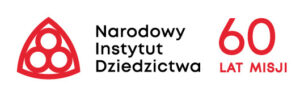Contact Us
Are you interested in cooperation? Give us a call or write to us – we will answer any questions.

Considering the history of engineering and construction, we can regard BIM as a relatively young concept. Building Information Modeling, abbreviated as BIM, emerged in the early 21st century, formulated by Jerry Laiserin and widely adopted by industry leaders. Although the initial developments in the 1970s, which gradually evolved into computer-aided design (CAD) (e.g., ArchiCAD, Archition), served as precursors to BIM modeling, it is only recently that the computational capabilities of commercially available tools have allowed BIM to flourish.
BIM is, in fact, a concept that has completely transformed our understanding of design, project execution, and subsequent management. Seamless, fast, and uninterrupted access to building information enables estimation and cost analysis on an unprecedented scale. The modeling of information in such a comprehensive and digital form digitizes and disseminates data, resulting in tangible benefits compared to traditional methodologies.


BIM modeling largely refers to design software, where previously placed, digitally defined elements such as roofs, windows, doors, walls, etc., can be combined in the model and assigned values corresponding to the desired parameters.
Throughout the entire BIM modeling process, every parameter can be modified according to project needs, new attributes can be added, and all changes made in the 3D model are automatically reflected.
It is worth noting that a project created using the Building Information Modeling approach is, in a sense, a representation of the actual building and its attributes. Analyzing the collected data allows for identifying erroneous design assumptions and avoiding construction clashes, known as clashes, at the early stages of the entire process.
Therefore, it can be confidently stated that BIM modeling is an excellent tool that proves useful not only in new investments but also in revitalization and renovation projects of existing units.
Geodetic technicians are increasingly enriching their portfolios with 3D scanning services, thanks to a wide range of available devices.
Depending on the type of equipment, they can offer different levels of precision, range, and efficiency. Therefore, choosing the right device for a specific structure is crucial.
3D scanning assists in visualization, data acquisition, processing, and sharing of highly precise and high-quality digital representations, while also saving time.
It helps in visualizing, capturing, processing, and sharing digital representations with high precision and quality, as well as time savings.









Level 0 signifies a project that promotes zero collaboration and utilizes traditional 2D CAD drawing techniques on paper. The main objective is to develop technical documentation in electronic and/or paper format. This level represents an outdated approach that is rarely used by industry professionals nowadays.
Level 1 BIM encompasses the use of both 3D CAD and 2D drafting. While 3D CAD is utilized for conceptual work, 2D is employed for generating statutory approval documentation and production information. At this level, data exchange occurs electronically through a Common Data Environment (CDE) managed by the contractor.
Collaboration between different participants at this level is minimal or non-existent, as each creates and manages their own data.
To achieve Level 1 BIM, the following elements need to be addressed:
Establishing the roles and responsibilities of all stakeholders (CIC BIM Protocol) Adopting standardized naming conventions (Uniclass 2015) Creating and maintaining project-specific codes and spatial coordination (Industry Foundation Class) Implementing a shared electronic document management system to facilitate information exchange among all teams. Defining an appropriate information hierarchy that supports the CDE and document repository.

Level 2 BIM promotes collaborative working by providing each stakeholder with their own 3D CAD model. Collaboration is the key differentiating factor at this level, requiring enhanced information exchange related to the project and smooth coordination across all systems and stakeholders.
All parties work on their respective local 3D CAD models, and information is exchanged through a common file format. This system allows organizations to combine external data with their own model to create an integrated BIM model.
To achieve Level 2, the following are necessary:
Meeting all the guidelines outlined at Level 1 Installing CAD software that supports common file formats such as IFC or COBie

Often referred to as “Open BIM,” the scope of Level 3 has not been fully defined, although it promises deeper collaboration among all stakeholders through a shared model stored in a central repository. The Level 3 concept enables all participants to work simultaneously on the same model, eliminating the possibility of information conflicts.
Level 3 proposes the use of an integrated solution built on open standards, such as IFC, where a single server stores all project data.
Proper implementation and adoption of Level 3 require:
The development of a fresh “Open Data” standard that facilitates sharing of project data worldwide. The creation of new contractual frameworks for BIM-based projects to promote collaboration and ensure consistency. Training clients in the application of BIM techniques.






Building Information Modeling (BIM) offers numerous benefits. In addition to faster design, cost reduction, and improved safety, it also promotes sustainable development. BIM is increasingly being implemented as a technological process and, as time passes, it is becoming the new standard in the construction and engineering industry.
01.
In the same way that many of these solutions help save money, they also save time by reducing design cycles and eliminating delays in construction schedules. BIM modeling enables design and documentation to occur simultaneously, and facilitates easy modification of documentation to adapt to new information, such as on-site conditions. Schedules can be planned more accurately and conveyed precisely, while better coordination helps increase the likelihood of projects being completed on time or even ahead of schedule.
02.
Many companies in the industry recognize that utilizing estimators in the early stages of planning allows for more efficient cost estimation, leading to the development of model-based estimating (also known as 5D BIM). The use of BIM tools such as Revit automates the time-consuming task of determining and calculating costs, allowing estimators to focus on higher-value factors, such as identifying construction assemblies and assessing risk.
03.
By utilizing BIM modeling, the entire project can be planned and visualized during the preparatory stage before the first shovel hits the ground. Space utilization simulations and 3D visualizations allow clients to experience what the space will look like, providing an opportunity to make changes before construction begins. Having a greater overview from the beginning minimizes costly and time-consuming changes later on.
04.
Increased reliability of a coordinated model directly leads to a higher quality construction process. By sharing common BIM tools, more experienced team members collaborate with builders throughout all phases of the project, providing better control over technical decisions regarding project implementation. Optimal construction methods can be tested and selected at an early stage of the project, and design flaws can be identified before construction begins. Through the use of visualization, the aesthetics of the project can be easily adjusted, for example, by modeling the flow of natural light into the building. Then, during construction, reality capture technology can be utilized to enhance accuracy.
05.
BIM can help improve safety on construction sites by identifying hazards before they become issues and mitigating physical risks through visualization and advanced construction logistics planning. Visual risk analysis and safety assessments can assist in ensuring safety during project execution.
06.
BIM data can be used for immediate generation of production drawings or databases for manufacturing purposes, enabling increased utilization of prefabrication and modular construction technologies. By designing, specifying details, and constructing off-site in a controlled environment, it is possible to reduce waste, increase efficiency, and lower labor and material costs.
07.
BIM modeling enables better coordination among trades and subcontractors by detecting any clashes, whether internal or external, before the construction phase begins. For example, it can identify conflicts between electrical and plumbing installations or undersized window openings or door clearances. By using appropriate software, clashes can be automatically detected and avoided, significantly reducing the need for rework. With BIM, everything can be planned before starting construction on-site. This helps avoid last-minute changes and unforeseen issues, allowing for easy review and commenting on every process.
08.
The information contained in the BIM model also enables the operation of the building after the completion of construction, ensuring a return on investment long after the project is finished. By utilizing construction software, an accurate and continuous digital record of building information is invaluable for facility management and renovation teams throughout the entire life cycle of the building. Data can be transferred to existing facility management software for post-occupancy utilization. Building Information Modeling has become an invaluable tool that brings many benefits to the construction industry. Projects that employ BIM have a greater chance of success and maximize efficiency at every stage of the project life cycle and beyond.
09.
Digital BIM models enable sharing, collaboration, and rapid iteration, which is not possible with paper-based drawing sets. Cloud-based tools facilitate seamless BIM collaboration across all facets of the project. The BIM ecosystem allows teams to share project models and coordinate planning, providing stakeholders with visibility into the project. Cloud access also enables project teams to take the office to the field. By leveraging various available applications, teams can review drawings and models on-site and on their mobile devices, ensuring access to up-to-date project information at any given moment.
10.
Research shows that companies using BIM experience tangible returns on investment. However, it is important to note that BIM technology can save money in various ways if utilized effectively. Closer collaboration with contractors can lead to reduced bid premiums, lower insurance costs, fewer overall discrepancies, and decreased potential for claims. Enhanced project visualization before commencement allows for increased prefabrication and reduces waste from unused materials. Prefabricated elements can be easily installed on-site instead of being constructed on-site. Costs associated with documentation and miscommunication-related labor are reduced. Many companies leverage BIM and construction technology to lower costs and mitigate risks. With an increasing number of team members accessing project data, real-time collaboration and a single document repository reduce the risk of each company working with outdated information. Ensuring that the right data is available at the right time is essential for successfully delivering a high-quality project.
Are you interested in cooperation? Give us a call or write to us – we will answer any questions.
